|
Varietal Selections |
|
|
 |
 |
|
| RAMBUTAN |
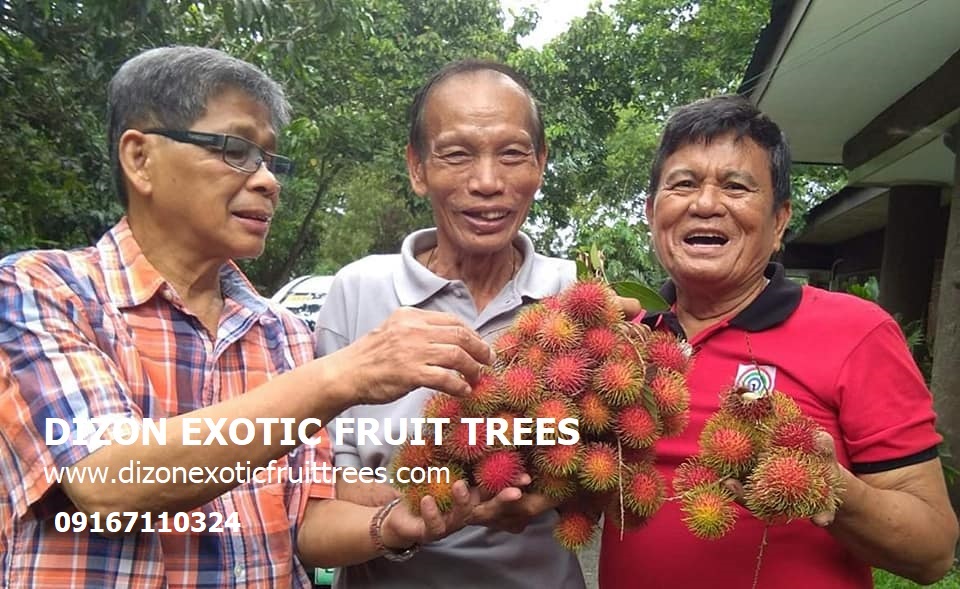 |
| |
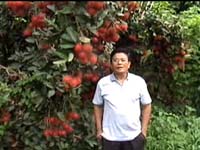 |
Many people did not
want to eat rambutan during the early 60's. This was
because then, the only available rambutan is the
native variety which is sour and which flesh sticks
to the seed (for this characteristic, the name
supsupin was derived). |
|
| With the
introduction of Maharlika and other new varieties,
Rambutan became popular because of its sweet taste.
Its seeds also readily separate from the flesh. |
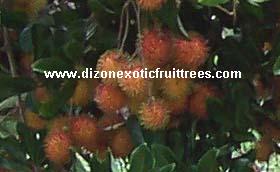 |
|
 |
In the late
'80s, more outstanding varieties from Thailand (Rongrein
and gulahbato), Malaysia (R162 and R5), Singapore (Jitlee)
were introduced in the country.
|
Rongrien
Rambutan |
|
Manila
Bulletin, Agriculture, Agri Plain
|
|
Talk,
Thurs., Aug. 19, 1999 |
|
|
| Former
elementary teacher Manalo Isidro of Alaminos, Laguna
was given six grafted trees of rambutan. He then
planted them in his yard and eight years later,
would you believe that a single tree's yield gave
him an income almost the same with that of his one
year earning in an hectare of his coconut
plantation? For this reason, he converted his
coconut farm into a rambutan orchard. |
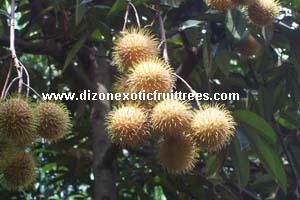 |
|
| |
|
Manila Bulletin, Home & Garden, Saturday August
21, 1999 |
RONGREIN RAMBUTAN AT
MAGALLANES.
Bernie Dizon will have a special offering of
grafted Rongrein rambutan at Magallanes Weekend
Market today and tomorrow. This is an
outstanding variety from Thailand which is often
used for canning in the country. It has crunchy
flesh that readily separates from the seed.
Other special fruit trees to be offered are the
Millennium mango (a big-fruited hybrid with
excellent taste), grafted mangosteen, lychee and
longan, and marcotted rimas.
Rimas does not normally root by marcotting.
However, a special hormone makes it possible to
produce marcotted rimas. This one fruit tree
that can help the country's program of food
security. The marcotted rimas will bear fruit in
three or four years from planting. |
|
| |
|
Rambutan Growers in
Tanay |
|
Manila Bulletin, Agriculture, Thursday, Sept.
17, 1998 |
|
You can make your fruit
trees low-growing and very fruitful; Seminar
this Saturday afternoon |
|
Manila Bulletin, Agriculture, Thursday, December
17, 1998 |
|
Rambutan at the Parks &
Wildlife |
|
Manila Bulletin, Agriculture, Saturday, June 16,
2001 |
|
Tiaong Rambutan
Festival - Most Enjoyable, Educational |
|
Philippine Panorama, Sunday, October 14, 2001
|
|
A lot of people getting
interested in rambutan |
|
Manila Bulletin, Agri Plain Talk, Thursday,
September 14, 2000 |
A
retired judge planted Mahalika variety from Los Baños,
Laguna in his farm in Salcedo, Ilocos Sur. This variety
bears fruits ahead of those in Laguna, where he got his
planting materials. His rambutan began flowering in January
to February. The harvest time then fell in May and June when
the seedlings from Laguna just begin to flower. |
| |
|
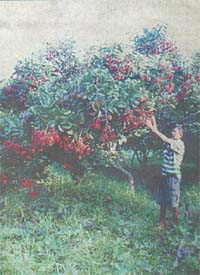 |
MANILA
BULLETIN, Agriculture, Sat., Sept 2, 2000
RAMBUTAN FESTIVAL.
There will be a rambutan festival at the 11-hectare
farm of Atty. Victor P. Lazatin in Tiaong, Quezon,
on Tuesday, Sept. 19, where families in the city can
have a very "fruitful" experience, For an entrance
fee of P100, each participants can have free lunch
and one kilo of rambutan. The attendees can also buy
newly harvested fruits at 33% discount. There will
be a free lecture by Bernie Dizon on how to plant
and taker care of rambutan trees. Photo shows a
fruitful rambutan tree with Eddie Rubio at the
Lazatin Farm. |
|
|
|

